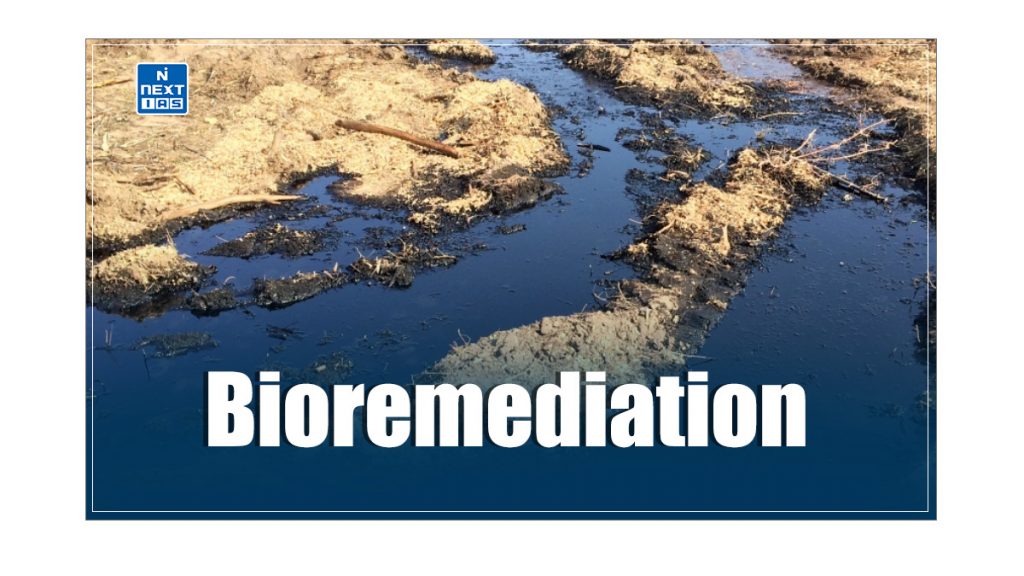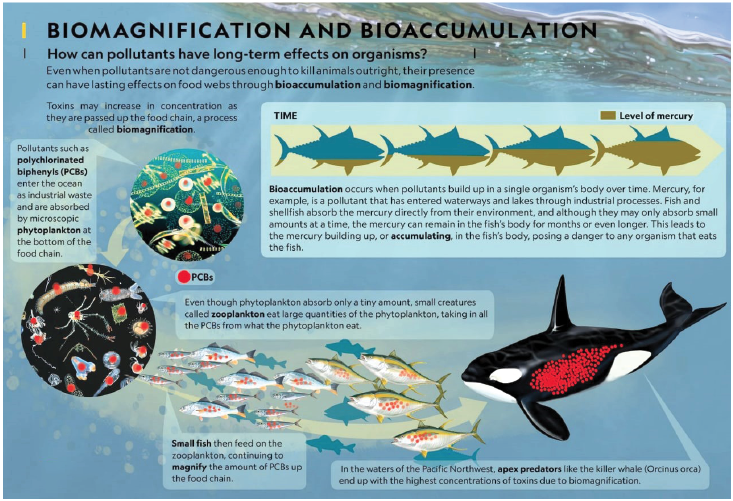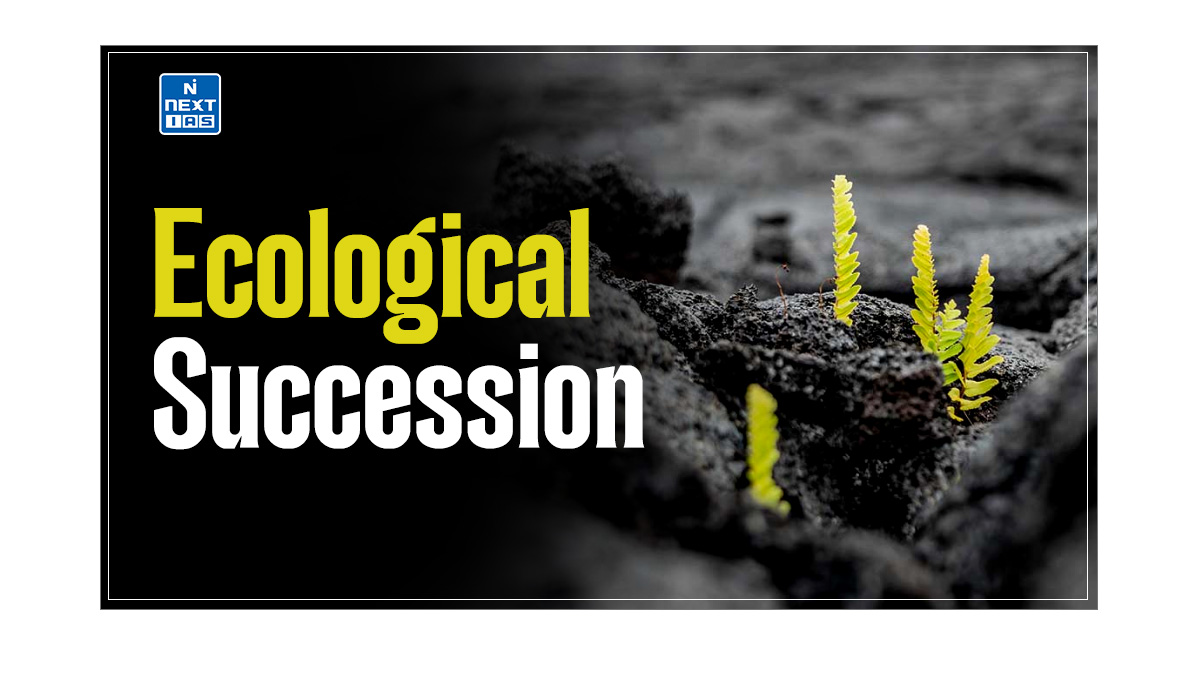
Bioremediation is a promising technology for addressing environmental pollution. This approach has gained significant attention due to its potential to restore polluted environments and offer sustainable solutions to pollution problems. This article aims to study in detail Bioremediation, its meaning, working mechanisms, techniques, advantages, limitations and other related concepts such as Phytoremediation.
What is Bioremediation?
- Bioremediation is using living microorganisms to degrade environmental contaminants into less toxic forms.
- Bioremediation uses naturally occurring bacteria, fungi, and plants to degrade or detoxify substances hazardous to human health and/or the environment.
- The microorganisms may be indigenous to a contaminated area or isolated from elsewhere and brought to the contaminated site.
- Bioremediation has gained significant attention in recent years due to its potential to address various environmental challenges, from oil spills to contaminated soil and groundwater.
How Does Bioremediation Work?
- Bioremediation involves introducing specific microorganisms or creating conditions that favour the growth of naturally occurring microbes capable of degrading pollutants.
- This technique leverages the natural capabilities of bacteria, fungi, and other organisms to break down contaminants into less harmful or harmless substances.
- These microorganisms, known as bioremediation, metabolise the contaminants as a source of energy or nutrients.
- They break down complex pollutants through biochemical reactions into simpler, less harmful substances that can be assimilated into the environment.
| Bioremediation can be monitored indirectly by measuring the oxidation-reduction potential or redox in soil and groundwater, along with pH, temperature, oxygen content, electron acceptor/donor concentrations and concentration of breakdown products (e.g. CO2). |

Types of Bioremediation Techniques
Two primary types of bioremediation techniques exist – In Situ Bioremediation and Ex Situ Bioremediation.
In Situ Bioremediation
- In Situ, Bioremediation involves treatment of the contaminated material at the site.
- Prominent types of In Situ Bioremediation techniques can be seen as follows:
Bio-Venting
Bio-Venting involves supplying oxygen and nutrients through aqueous solutions through contaminated soils to accelerate naturally occurring microorganisms and degrade organic impurities.
Bio-Sparging
Bio-Sparging involves the pressurised injection of air below the water table to increase the content of groundwater oxygen concentration and the rate of biological degradation of wastes by naturally occurring microorganisms.
Bio-Augmentation
Bio-Augmentation involves continuously adding microorganisms (indigenous or exogenous) to the contaminated sites.
Ex Situ Bioremediation
- Ex Situ Bioremediation involves the removal of the contaminated material to be treated elsewhere.
- Prominent types of Ex Situ Bioremediation techniques can be seen as follows:
Land Farming
Land Farming is a simple technique in which contaminated soil is excavated, spread over an already prepared bed, and tilled regularly until pollutants are degraded.
Composting
Composting is a procedure for combining contaminated soil with non-hazardous organic materials such as manure or agricultural waste.
Bio-Piles
Bio-piles combine land farming and composting. Fundamentally, engineered cells are built as aerated compost piles.
Bio-Reactors
A slurry bioreactor is a containment vessel and machinery that creates a three-phase (solid, liquid, and gas) mixing condition to expand the bioremediation rate of soil-bound and water-soluble pollutants.
Advantages of Bioremediation
- Cost-Effective: Compared to traditional methods like excavation and chemical treatment, bioremediation is often less expensive due to lower operational and maintenance costs.
- Environmentally Friendly: Bioremediation is a natural process that minimises harsh chemicals and physical interventions, making it environmentally sustainable.
- Versatility: Bioremediation can be applied to various pollutants, including hydrocarbons, heavy metals, pesticides, and solvents. It can be used for soil, water, and even air remediation.
- Minimal Disruption: In-situ bioremediation techniques allow for the treatment of contaminants without requiring extensive excavation or relocation, reducing environmental disruption.
Disadvantages of Bioremediation
- Limited Applicability: These techniques are useful only for biodegradable pollutants.
- Site-specific conditions: The effectiveness of bioremediation depends on factors such as temperature, pH, moisture content, and the presence of nutrients.
- Contaminant toxicity: Some contaminants may be toxic to microorganisms, hindering their ability to degrade pollutants.
- Fear of Toxic Effects: Some people are concerned that the products of biodegradation may be more lasting or toxic than the parent compound.
- Time Consuming: Takes much more time than other treatment options, such as pyrolysis or incineration.
- Scalability Issue: It is difficult to extrapolate from bench and pilot scale studies to full-scale field operations.
Conclusion
Bioremediation has the potential to provide a powerful and sustainable approach to managing environmental pollution. More research should be conducted to enhance its efficiency and applicability, making it a valuable tool in the quest for environmental sustainability and public health protection.
Phytoremediation
- Phytoremediation is a type of bioremediation that uses plants to remove contaminants from a polluted environment.
- Various types of Phytoremediation mechanisms are as follows:
Phytoextraction or Phytoaccumulation
Phytoextraction or Phytoaccumulation is the process by which plants accumulate contaminants in the roots and aboveground shoots or leaves.
Phytotransformation
Phytotransformation refers to the uptake of organic contaminants from soil, sediments or water and their transformation to a more stable, less toxic, less mobile form.
Phytostabilisation
Phytostabilisation is a technique in which plants reduce the mobility and migration of contaminated soil.
Phytodegradation
Phytodegradation is the breakdown of contaminants through the activity existing in the rhizosphere.
Rhizofiltration
- Rhizofiltration is a water remediation technique involving contaminant uptake by plant roots.
- It is used to reduce the contamination in natural wetlands and estuary areas.
Mycoremediation
Mycoremediation is a form of bioremediation in which fungi are used to decontaminate the area.
Microfiltration
Microfiltration uses fungal mycelia to filter toxic waste and microorganisms from water in the soil.
Frequently Asked Questions (FAQs)
What is Bioremediation?
Bioremediation is the process of using microorganisms, plants, or enzymes to degrade or neutralise contaminants and pollutants in the environment, such as oil spills, heavy metals, and pesticides, to restore the natural ecosystem.
Which bacteria is used for bioremediation?
Some bacteria commonly used in bioremediation include Pseudomonas, Alcanivorax, Bacillus, and Deinococcus, as they can break down various toxic substances.
What is bioremediation technique?
Bioremediation techniques use living organisms, particularly microorganisms, to treat contaminated soil, water, or air by breaking down harmful substances into less toxic or non-toxic compounds. Techniques include in-situ (at the contamination site) or ex-situ (removal and treatment elsewhere) methods.
What is an example of bioremediation?
An example of bioremediation is using Pseudomonas bacteria to degrade oil spills in oceans.






